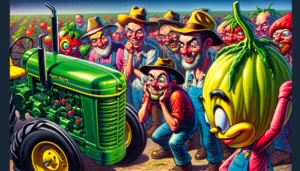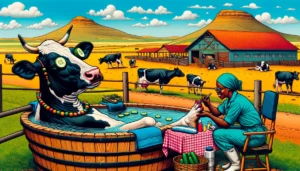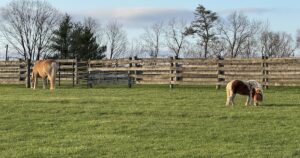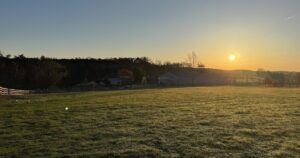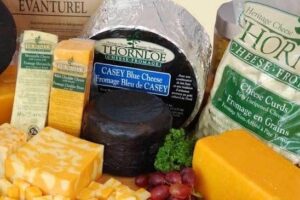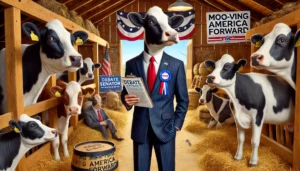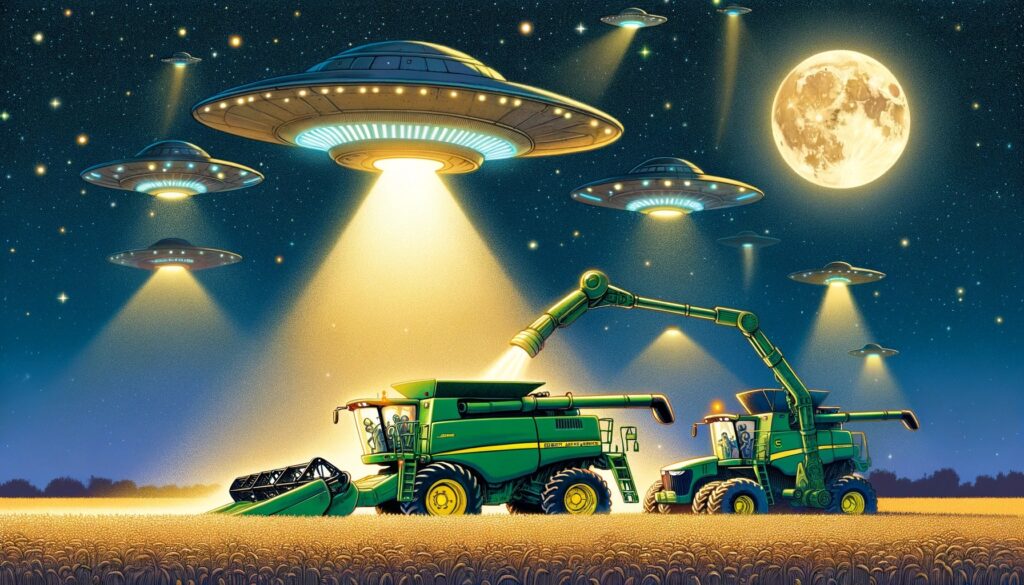
Farmer Cowboy Photo Draw one close up illustration showing John Deere combine harvesters working under the moon and UFO lights during a night harvest in West Texas. The c2.webp.jpeg
When the Stars Align: West Texas’s Agricultural Revolution
In a turn of events that has left agronomists baffled and UFO enthusiasts vindicated, West Texas has become the epicenter of an interstellar farming renaissance. As the sun sets over the vast plains, the night sky is alight not just with stars but with the beams of alien spacecraft, diligently tending to the fields with a precision that Earth-bound technology can’t match.
Save West Texas; Save the World

In the sprawling fields of West Texas, where the sun sets with a promise and rises with a challenge, an extraordinary alliance has formed. Aliens, once the stuff of sci-fi fantasies and late-night conspiracy theories, have descended not with a show of force, but with a gesture of solidarity, turning the tide for the struggling agricultural sector and, by extension, the world.
These extraterrestrial visitors, equipped with their advanced technologies and otherworldly knowledge of agronomy, have become the unexpected saviors of the harvest. Their spacecraft, emitting a gentle, ethereal glow, work alongside the farmers’ tractors, turning night into day and barren soil into fertile ground. They’ve introduced cosmic crop rotation techniques that have revitalized the earth, bringing forth an abundance that seemed like a distant memory.
Their methods are not just about yield but also about sustainability. They’ve shown that with the right care, the land can provide without being depleted, ensuring that future generations will continue to thrive. This interstellar intervention has sparked a beacon of hope, not just in West Texas but globally, as the world watches and learns. If we can save the harvest here, with a helping hand from the cosmos, perhaps we can save the world, proving that when we come together, be it with neighbors from down the road or from light-years away, there’s no challenge we can’t overcome.
Intergalactic Irrigation Techniques in Lubbock

Lubbock’s farmers are the first to witness this cosmic collaboration, as extraterrestrial visitors introduce advanced irrigation methods that defy gravity—literally. The aliens, with their superior understanding of water conservation, have turned Lubbock’s arid fields into flourishing oases overnight. Local farmer Jeb Hawkins, sporting a “Make Mars Great Again” cap, swears by the new techniques, claiming, “These little green guys have done more for my crops than all the fertilizer in Texas.” Meanwhile, the local water diviners are feeling pretty redundant, walking around with their dowsing rods, now just using them to point at the sky and say, “Yep, there’s the water source, up there with the flying saucers.”
Cosmic Crop Circles: Stephenville’s New Tourist Attraction
Stephenville has long been a hotspot for UFO sightings, but now it’s famous for its intricately designed crop circles. Far from being mere extraterrestrial graffiti, these patterns are actually the aliens’ way of optimizing crop growth. Tourists flock to the area, snapping selfies with the otherworldly art, while farmers like Sue Ellen Johnson marvel at the increased yields. “Who knew aliens were so handy with a plow?” she muses, as she watches her wheat sway in a pattern resembling the Andromeda Galaxy. Local kids have even started a game of alien tag in the fields, dodging between the cosmic patterns and arguing whether getting tagged by an alien beam counts or not.
Amarillo’s Midnight Harvest: A Sight to Behold

In Amarillo, the alien assistance has turned night into day, as farmers and their new friends harvest under the light of spacecraft. The sight is so spectacular that it’s become a nightly festival, drawing crowds who cheer on the farmers and their celestial counterparts. “It’s like a tractor pull, but with UFOs,” exclaims local teen Tyler, who’s considering a career in extraterrestrial agriculture. The local nightlife has never been more vibrant, with farmers now scheduling their social events around crop harvesting schedules. “Who needs nightclubs when you’ve got combine harvester discos?” one local was overheard saying.
Dumas and the Galactic Guidance System
Dumas’s farmers are particularly thankful for the aliens’ navigational prowess. Gone are the days of crooked furrows and uneven seeding. With extraterrestrial GPS, every row is a masterpiece of agricultural precision. “I don’t know how we farmed without them,” admits grizzled veteran Harlan Briggs, as he watches his tractor steer itself under the watchful sensors of a hovering spacecraft. Meanwhile, the local crop circle book club has had to adjust its reading list to include manuals on alien technology, just to keep up with the agricultural jargon now floating around town.
Plainview’s Interstellar Economic Boom

The alien alliance has brought more than just agricultural benefits to Plainview—it’s sparked an economic boom. Local businesses thrive, selling everything from alien-themed merchandise to organic produce “blessed by the stars.” The town’s mayor, clad in a robe adorned with constellations, declares, “We’re not just growing crops; we’re growing the economy.” Even the local diner has jumped on the bandwagon, offering dishes like “Martian Meatloaf” and “Cosmic Cornbread,” which, despite their earthling ingredients, are selling out faster than a spaceship at liftoff.
Olton’s Annual Alien Appreciation Parade
Olton shows its gratitude with an annual parade, where farmers and their extraterrestrial helpers float down Main Street on a convoy of tractors and spacecraft. The event culminates in the crowning of the Alien Harvest Queen, a title that carries great honor (and a year’s supply of moon beans). The local high school band has even added a new piece to their repertoire: “The Martian Two-Step,” which, despite its name, is surprisingly difficult to dance to with only two feet.

Muleshoe’s Mixed Reactions: Not Everyone’s Over the Moon
Not all locals are thrilled with the new arrangement. In Muleshoe, a small but vocal group protests the alien presence, fearing the loss of traditional farming methods. Their leader, a curmudgeonly octogenarian with a penchant for conspiracy theories, warns, “Today they’re harvesting our wheat, tomorrow they’re harvesting our brains!” Meanwhile, the local sci-fi book club is experiencing a renaissance, with membership at an all-time high as everyone scrambles to understand their new neighbors.
The Future: Where Do We Go from Here?
As West Texas adapts to its role as the intergalactic agricultural hub, questions abound. Will other regions welcome alien farmers? Can Earth’s new friends help solve global hunger? And, most importantly, will there be enough space on the UFOs for all the aspiring alien agronomists? One thing’s for certain: In West Texas, the future of farming is looking up—literally. So next time you gaze at the night sky, remember that among those twinkling stars could be the next breakthrough in agriculture, just waiting to land. Or maybe it’s just Bob, out for another midnight plow.
Top Ten Things the Aliens Requested After Helping with the Harvest
- Tumbleweeds: For some unfathomable reason, these rolling vagabonds of the West Texas plains have caught the fancy of our alien helpers, perhaps for intergalactic landscaping or as specimens for otherworldly botanical studies.
- Leftover BBQ Sauce: After sampling some of West Texas’s finest cuisine, the aliens developed a peculiar fondness for the tangy condiment, requesting any surplus bottles, much to the amusement of local pitmasters.
- Cowboy Hats: Though they serve no practical purpose for beings with distinctly non-human head shapes, the aliens seem to cherish these iconic symbols of Texan culture, possibly for their novelty or as part of an interstellar fashion trend.
- Roadside Attraction Postcards: Captivated by the quirky charm of West Texas’s roadside attractions, our extraterrestrial friends have taken to collecting postcards as mementos of their time on Earth.
- Wind Chimes: The gentle melodies produced by these simple instruments are apparently quite soothing to alien sensibilities, leading to numerous requests for wind chimes to take back to their spacecraft.
- Boot Spurs: Despite having no use for them (as far as we know), the aliens are intrigued by the craftsmanship and history behind these traditional cowboy accessories.
- Olton “Mustang” Football Memorabilia: It seems the aliens have developed an unexpected interest in the camaraderie and spirit of high school football, asking for jerseys, banners, and other paraphernalia.
- Line Dancing Instruction Manuals: After witnessing a line dancing session at a local honky-tonk, the aliens became enthusiastic about learning the steps, leading to a surprising demand for instructional materials.
- License Plates: The diverse and colorful license plates found on West Texas vehicles have become coveted items among our alien visitors, perhaps as a form of art or cultural study.
- Weather Vanes: Fascinated by the way humans track the whims of the wind, the aliens have requested weather vanes, particularly those shaped like roosters, for reasons that remain as mysterious as the visitors themselves.



Disclaimer: This article is a work of satire, produced by a collaboration between cowboy creativity and farmer ingenuity. The events, alien encounters, and interstellar farming techniques described herein are as fictional as the Tooth Fairy’s dental practice. Any resemblance to actual events, locations, or extraterrestrial agricultural consultants is purely coincidental and intended for the amusement of our readers. Remember, if you’re taking farming advice from aliens, you might want to check your soil’s nutrient content—or your carbon monoxide detector.


Originally posted 2021-02-20 05:30:52.
Originally Published at FarmerCowboy.com
2025-02-02 15:56:22
Karl Hoffman is a distinguished agriculturalist with over four decades of experience in sustainable farming practices. He holds a Ph.D. in Agronomy from Cornell University and has made significant contributions as a professor at Iowa State University. Hoffman’s groundbreaking research on integrated pest management and soil health has revolutionized modern agriculture. As a respected farm journalist, his column “Field Notes with Karl Hoffman” and his blog “The Modern Farmer” provide insightful, practical advice to a global audience. Hoffman’s work with the USDA and the United Nations FAO has enhanced food security worldwide. His awards include the USDA’s Distinguished Service Award and the World Food Prize, reflecting his profound impact on agriculture and sustainability.
